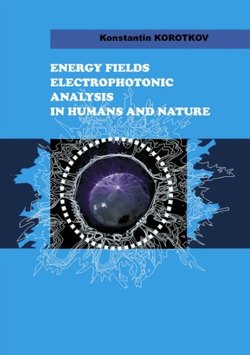Читать книгу Energy Fields Electrophotonic Analysis In Humans and Nature - Konstantin M.D. Korotkov - Страница 37
Parameters of EPI-grams used for the analysis
ОглавлениеThe common image processing application packages can not be used for processing EPI-grams, because the tasks are specific. Diagnostic hypotheses must be taken into account, and processing should be done on the level of decision-making systems. Therefore, a software environment was developed for processing and analyzing EPI-grams, oriented towards the work in different problem domains. Adaptation for particular assessment is performed through a combination of optimal operations from the library for the given problem domain, selection of corresponding procedures, and (or) selection of optimal threshold values.
The following main algorithms are included in the library:
Pseudo-coloring. For visual estimation of the image, there are several algorithms of pseudo-coloring, oriented towards marking out several peculiarities of EPI-grams. The following types of pseudo-coloring are provided in the programs (fig.2.4):
1. Original image – image as it was obtained from the video camera and saved in an AVI-file. A gray color palette containing 256 shades of gray (from black to white) is used.
2. Inverted image – inverted gray color palette is used, containing 256 shades of gray (from black to white). Particular small details and thin streamers are better seen in this palette than in the initial image.
3. Intensity palette – image points are colored in one of eight colors. The brightest glow points are colored in the shades of blue, less bright points are colored in the shades of red. Points are colored in yellow when the intensity is higher than the noise level, but lower than the base noise level for the given frame. All image points removed by noise filtration are shown as white background.
Fig.2.4. Different types of colorization.
4. Solid palette – all image points removed by noise filtration are shown in black color, the rest of the points are shown in a monotonous bright color. Use this palette for analyzing a sector’s glow area and glow area of the whole image, in order to avoid optical illusion, which can occur if some points are not seen well, as the coloring is similar to the coloring of “noise” points.
5. Blue palette – color palette containing 256 shades of blue (from black to bright blue) is used. Points with minimal intensity of glow are shown in dark (almost black) shades, points with maximal intensity of glow are shown in bright (almost blue) shades. This palette displays the glow similar to the way it can be seen in the instrument’s electrode by the naked eye.
6. Energy palette – the image points are colored in one of the nine colors. The brightest glow points are colored in blues, the less bright ones are colored in reds, oranges and violets. All image points removed by the noise filtering algorithm are displayed as white background.
Specially designed programs allow for easy calculation of EPI-gram parameters. The main indices used are as follows: total area, normalized area, length of image perimeter, average intensity, emission coefficient, form coefficient, fractality coefficient, entropy, and integral area coefficient; along with dispersions of all these listed parameters.
Total image area: the number of pixels in the image having brightness above the threshold.
Normalized area is the ratio of EPI-gram area to the area of the inner oval - a “fingerprint;” it is reported in relative units. This parameter allows comparing EPI indices of people having fingers of different sizes.
Length of image perimeter. There are two approaches for calculating this parameter:
- area of differential figure, formed when an initial image is moved by one pixel in all coordinates;
- length of envelope of the image contour.
Average Intensity is an evaluation of the Intensity spectrum for the particular EPI image (fig.2.5).
Fig.2.5. Spectrum of the EPI image.
Emission coefficient (EC) characterizes the power of small fragments deleted from the EPI-gram and is measured in pixels.
Form coefficient (FC) is calculated according to the formula: FC = aL2/S, where L is the length of the EPI-gram external contour and S is the EPI-gram area.
Fractality coefficient (FrC) is calculated according to the algorithm of Mandelbrot as a ratio of lengths of perimeters of the image glow, obtained in different scales of EPI-gram. Form and fractality coefficients show the degree of irregularity of the EPI-gram external contour.
The next set of calculations is based on transformation of the initial image from the spherical coordinate frame into the Descartes system of one-dimensional curves through the use of Euler equations, according to the brightness and vector equidensities (fig.2.6). The image can be represented as a function F(x) of some argument x of the angle within the limits [0-360o]. Maximal length of the image radius, median's length, brightness or average values along the radius can serve as the function F(x). As a rule, the function F(x) is heterogeneous and changes quite chaotically. It can be interpreted as a part of an unlimited probabilistic variable and mathematical principles can be applied for describing statistical dependencies, enabling the calculation of a number of parameters, EPI-gram.
Fig, 2.6. Isolines of the EPI image.
Integral area coefficient is a characteristic calculated in EPI Diagram program according to the formula:
For evaluation of the functional state of particular functional systems and organs, these parameters may be calculated for the whole EPI-gram or for the sectors of particular projection zones.
